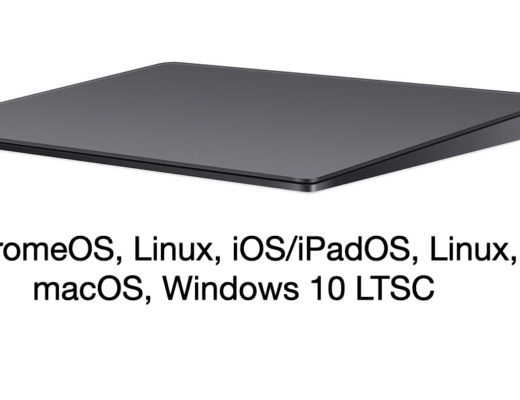The 13th Annual Entertainment Technology Expo is this November 6-7th and the event continues to stand as the leading Expo on the west coast for content creators working in every field. But just as the world of content creation is evolving, so too is ETE, as the event is featuring workshops taught by the leading experts in several fields.
 One of those experts who will be on hand and is post production veteran Igor Riđanović, a picture finishing expert whose Los Angeles career began well before “digital” became a household name. Igor is a veteran in every sense of the word as twenty years in high end post led him from analog, through digital to cloud technology with one constant—a never-ending pursuit of solutions that benefit artists and producers. Two films that he has worked on as a colorist have been released this October. They are “Grace Unplugged” distributed by Lionsgate and “Fright Night 2” from 20th Century Fox.
One of those experts who will be on hand and is post production veteran Igor Riđanović, a picture finishing expert whose Los Angeles career began well before “digital” became a household name. Igor is a veteran in every sense of the word as twenty years in high end post led him from analog, through digital to cloud technology with one constant—a never-ending pursuit of solutions that benefit artists and producers. Two films that he has worked on as a colorist have been released this October. They are “Grace Unplugged” distributed by Lionsgate and “Fright Night 2” from 20th Century Fox.
I spoke with him about his career and the changes he’s seen across the industry as well as what attendees of his workshop should expect to see and discover. To register for ETE, click here.
ProVideo Coalition: How have you seen color management evolve?
Igor Riđanović: Color management in television and film has been around in some shape or form for a long while. Certain aspects of color management predate digital recording and delivery of moving pictures.
But it's only in the recent years that color management concepts have come to the forefront and entered the every-day world of editors and assistant editors who traditionally did not need concern themselves with such things. We owe this almost entirely to the proliferation of high end digital cameras.
What's one simple thing editors and DIT's don't realize about color management?
Editors probably don't realize they are required to take an active role in the process at all. Much of color management is automated but there are times when user input is essential. One day perhaps all of the color management technology will be fully automated and flawless in execution, but we're not there yet.
When I say “editors” I really mean assistant editors who would generally prepare the media for the editor. Of course, on certain productions all that work could be handled by the editor alone adding one more thing to the already full plate.
DITs are more aware there is such thing as color management working in the background and trying to keep color straight. Some junior DITs may not be familiar with the concepts, but then there are some very strong DITs who come from photography background where color management has been traditionally better understood than in film and TV.
How have you seen poor color management affect a cinematographer's intent and the overall project?
Sadly, I've seen errors in the color pipeline creep up to the final picture in my own work. It's not a good feeling to cringe after seeing a problem in the final piece knowing that the director and the cinematographer sitting next to you have noticed the same thing.
Luckily, although I'd prefer nothing less than to maintain the cinematographer's vision a hundred percent, most color anomalies that professionals see are largely ignored by the audiences. This is a testament to the storytelling power of the medium.
You're teaching a workshop at the Entertainment Technology Expo next week. What sort of person do you expect will get the most of out the workshop?
In fact I am teaching two workshops. One is called “Introduction to Color Management for Film and TV.” This workshop is aimed at assistant editors, editors, junior DITs and assistant colorists as well as any other professionals interested in learning the basics of color management. The workshop will be as non-technical as I can make it—no heavy math at all. It will also be equipment agnostic as I believe that it's much better to understand the underlining principles than to memorize what buttons to push.
The other workshop is called “Media Composer 7 Color Management (LUTs).” Avid made some important progress in the most recent release of Media Composer and in this workshop I want to show assistant editors, editors and DITs how to harness these new tools when dealing with new camera formats.
In my every day work at Kappa Studios I see a lot of out-of-house Media Composer projects and there has been much confusion over the years on how to properly import file based media and interpret color. This goes even further back before any high end digital cameras existed. One part of the session will briefly look at these legacy import issues too.
To be very clear, this workshop is not about color correction at all, but about making sure the color the editor is working with matches the cinematographer's intent.
What kind of benefits can people get from attending and being in the room with you as opposed to viewing a video of the session?
We will cover a lot of material in both workshops and the real benefit of being at the session is the ability to ask questions. And I expect there will be lots of questions. Plus you know as well as I do that nothing compares to having a real conversation with another person. The interaction that happens at these sorts of events is one of the biggest reasons I do them, and I love answering questions and providing feedback to people. Videos are great, and I watch more than my fair share of them online. But you just can’t beat the kinds conversation you can have with people when you’re in the same room.
How do you think the trips and tricks you'll be showcasing will affect an editor or DIT's workflow?
As far as assistant editors and editors are concerned I hope to save them from some real headaches when they receive a dreaded drive full of original camera files and are not certain what to do with it.
I mean, look, in the past it wasn't the assistant editor's job to process the film and telecine the dailies. These days, even on decent budget productions anything can happen. Having the skills to bring this material correctly into the Media Composer in the middle of the night and have it ready for when the editor and director show up in the morning can be a huge asset.
The nature of DITs job requires a good command of a range of different software. Preparing material for use in Media Composer is a common task and mastering camera file import related skills can be helpful. Media Composer can fit in this pipeline in a myriad of ways.
Any surprises we can look forward to next week?
Like I said, this workshop is aimed at assistant editors, editors, junior DITs and assistant colorists as well as any other professionals interested in learning the basics of color management. And if you fall into any of those categories you’ll definitely learn some things you’ll be surprised to discover.
But as far as specifics go, if I gave that out now it wouldn't be much of a surprise next week, would it? ; )

Filmtools
Filmmakers go-to destination for pre-production, production & post production equipment!
Shop Now













